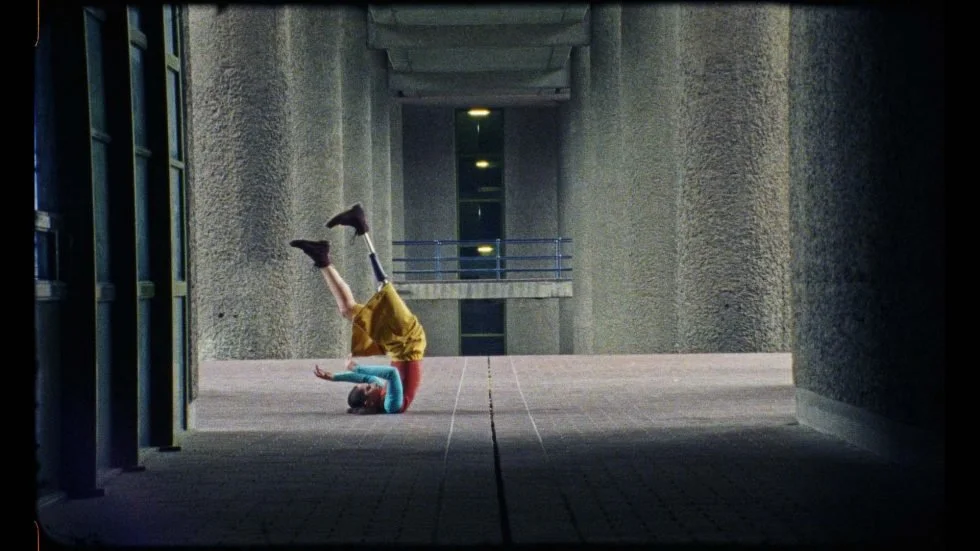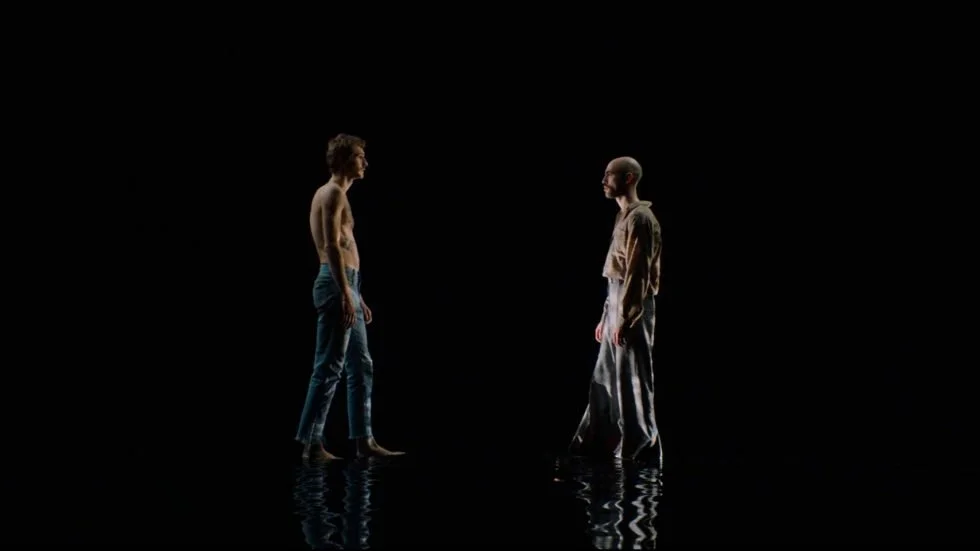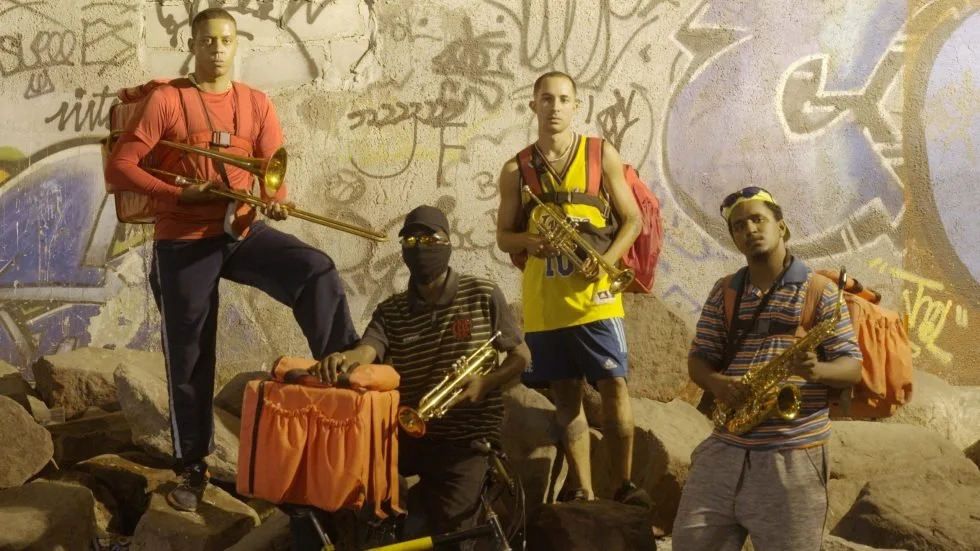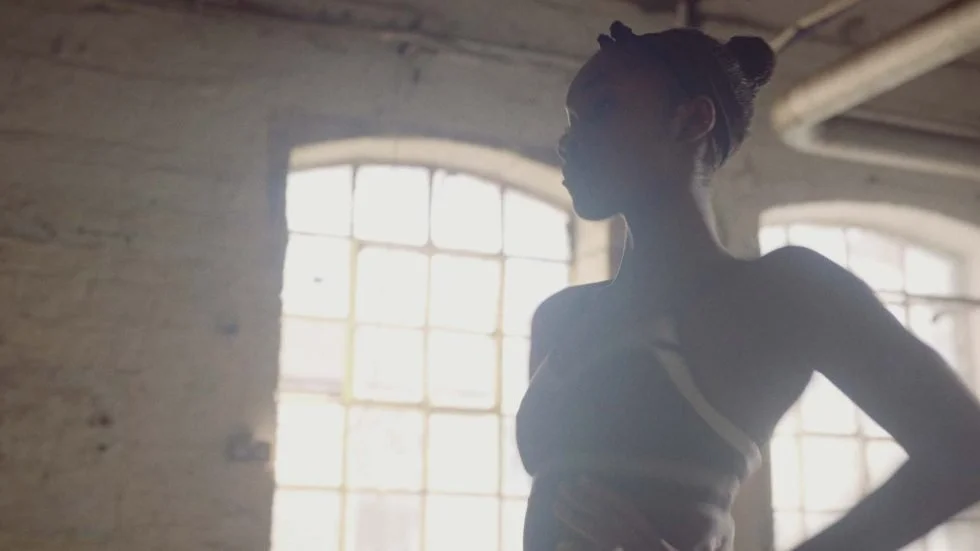Dance in all its diversity amid shorts at Reel 2 Real Film Festival for Youth
Move and Connect’s dynamic online high-school program spans stories from Brazil, the U.K., and beyond
Material Bodies
Reel 2 Real Film Festival for Youth streams the Move and Connect high-school shorts program online to April 13
IN A PROGRAM OF short films titled Move and Connect, this year’s Reel 2 Real Film Festival for Youth features dance videography in its most thought-provoking form.
Six pieces created in Brazil, Russia, Greenland, the U.K., and France challenge global downfalls and expectations in social, corporate, and political realms. The video works unpack intimate aspects of human connection through a variety of dance genres and creative explorations.
Though they all originate and draw inspiration from different areas around the world, each of the films in Move and Connect offers a sentiment that can be related to universally—whether it be perseverance, longing, frustration, or bliss.
Stir took a closer look at four of the films featured in the program.
Material Bodies
United Kingdom
Through a collection of ultra-satisfying shapes, textures, colour palettes, and dance movements, Material Bodies showcases the variety of connections that exist between amputees and their prosthetic legs.
Amid the interwoven personal narratives, pieced together under the direction of Dorothy Allen-Pickard, is lead dancer Mickaella Dantas, who views her prosthetic leg as an “extension” of herself. As the film’s rhythmic South African music—composed prominently of flute, bass, and drums—grows in intensity, so too does Dantas’s dancing. Her movements play a variety of qualities off each other: she is controlled and composed, yet liberated; repetitive, but then unrestrained and instinctive. She moves with both strength and precision. At times she is stationary; at other moments she is taking up the space around her beautifully, outfitted in flared yellow pants, a bright blue long-sleeve, and a red tank top that highlight her against the surrounding grey concrete walls and pillars. Dantas moves with her prosthetic leg, not around it.
Material Bodies also highlights the role a prosthetic leg can play in fashion decisions, particularly for nonbinary amputees, as it is likened to a material that can be styled however its wearer wants. Enhancing those ideas is a satisfying range of on-screen textural experimentation: a hand scrunches a piece of crimped foam, bends a crumpled sheet of copper, flutters a strip of iridescent material.
More than simply pleasing to the eye, this is a film that demonstrates amputees’ boundless range of artistic strength.
We Will Become Better
We Will Become Better
Russia
In a music video for Russian band Sansara’s rock ballad “We will become better,” dancers Nikita Orlov and Maksim Avdeev explore the intimate connection between two male lovers who cannot be near each other.
Under the direction of Andzej Gavriss, Orlov and Avdeev dance separately in two different locations—but strategic camera cuts show their movements yearning towards and reacting with each other, sharing an emotional intensity.
The film opens in a warm-toned apartment belonging to Orlov’s character, where a small songbird is let out of its cage by an invisible force that then rouses Orlov from slumber. Moving as if he’s being dragged, Orlov turns from sleepy reluctance to relief as he realizes who is guiding him: his lover, Avdeev’s character.
Russian song lyrics translated on-screen amplify an imaginative contemporary duet between the pair that ripples with desire and affection, before it is abruptly cut short when the reality that they are not together sets in. Orlov’s character subsequently falls into a harsh world of kaleidoscopic cool tones, his movements and expression becoming dazed and pained.
In an act that brings the film full-circle, Orlov’s character places the songbird released at the start of the film back in its cage, locking away the passion that had flown so freely between the two men, only moments before.
Through a beautiful combination of movement and lyricism that ties into the overarching theme “Love is everyone’s right,” this film offers a vital view into the emotional turmoil of sustaining an LGBTQ2SIA+ relationship in an isolated or potentially hostile environment—a narrative that is made all the more timely by Russia’s current strife with Ukraine.
Neon Phantom
Neon Phantom [Fantasma Neon]
Brazil
Writer-director Leonardo Martinelli adeptly captures the frustrations of being a food delivery person in Brazil through compelling dance performances that evoke a Broadway jazz musical.
João (Dennis Pinheiro), who delivers food on his bicycle, interacts with other deliverers who all express being treated with the same ignorance. They are “neon phantoms”, their woes invisible to their employers and customers despite their brightly coloured uniforms. No sympathy is given to the deliverers for illness or lateness; their safety is jeopardized by customers and vehicles; and job insecurity is around every corner.
With João in the lead, the deliverers intermittently break out into fast-paced hip-hop footwork and classic jazz routines, singing of their weariness in Portuguese. They wield jazz instruments like weapons, with one delivery person holding up a saxophone sideways to mimic an assault rifle, but they cause no violence; rather, they use song and dance to express their vexation. The deliverers’ facial expressions are consistently stoic and sombre, with gazes that stare deeply through the screen; they are asking to be seen, asking to be treated seriously.
In one scene, João imagines being hit by a car. His body is covered with a white, blood-stained sheet, his bicycle and food-delivery bag laying nearby. The shot is juxtaposed with an aerial view of a customer’s abandoned food delivery meal: remnants of a burger and fries, with plastic dipping sauce containers and crumpled paper packaging strewn around. That harsh sentiment of abandonment carries throughout Neon Phantom, urging us to take a closer look at employee rights in the expanding food delivery industry that may be leaving its workers behind.
Silence
Silence
United Kingdom
Director TJ O’Grady Peyton provides a refreshing modern exploration into the gender bias that continues to be associated with the dance world.
A teenage boy (Kai Joseph Keenan-Felix) sees a ballet dancer his age (Lauryn Bryan) performing on her own in an abandoned studio space filled with checkered glass windows and faded wood panelling. But Bryan’s character abruptly runs away when she notices someone watching her. Keenan-Felix begins copying her movements and learning ballet, returning home to his bedroom each day to practice his technique. When his father and male classmates find out about his practice, they belittle and emasculate Keenan-Felix’s character, making fun of him for engaging in a sport that is typically female-dominated.
Keenan-Felix’s character returns to Bryan’s hidden studio space often, secretly watching her move through space with strong lines, graceful ease, and peaceful facial expressions. Finally, in a culmination of his practice, Keenan-Felix reveals himself to Bryan and the pair engage in an amicable dance-battle-like duet, showing each other their moves.
With themes that bring to mind the 2000 coming-of-age British film Billy Elliot, this work explores a boy who continues to dance despite what those around him make of it. Keenan-Felix’s character is committed, passionate, and unyielding, lending to a film that speaks to the importance of letting people indulge in whatever may bring them joy.

















